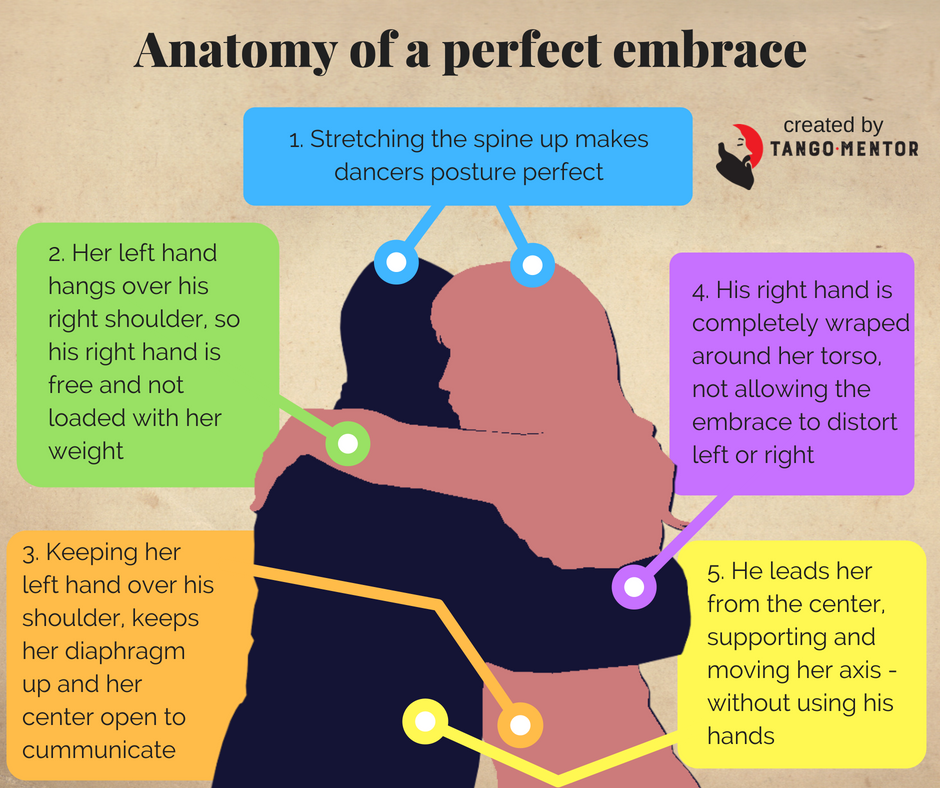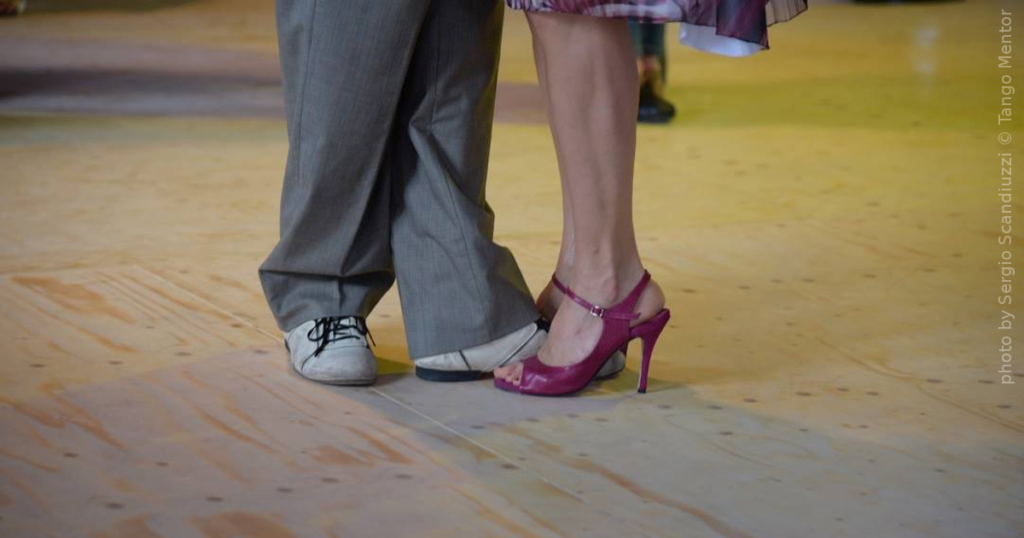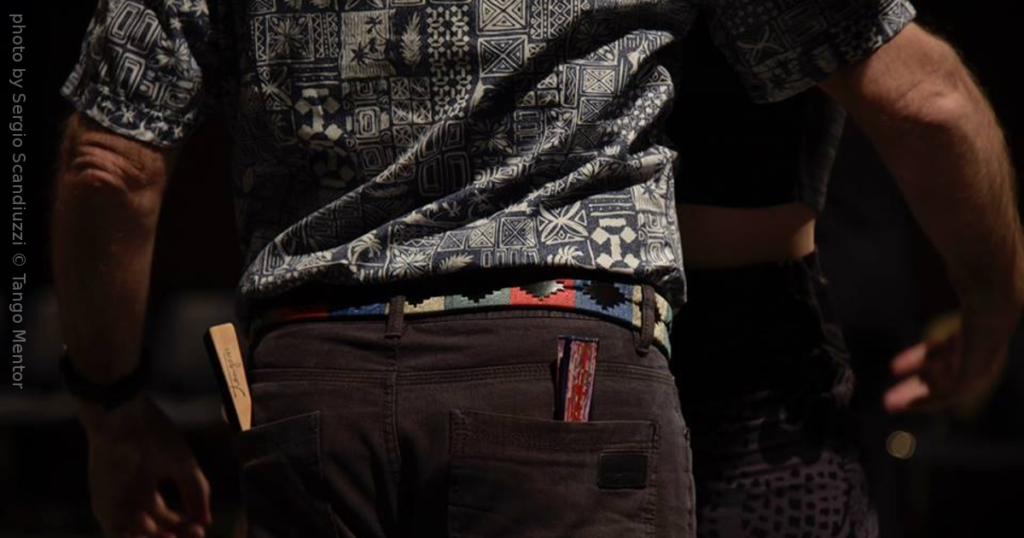What is perfect embrace? It is like a kiss – different people will give you different answer. Some like it soft and tender, others long and passionate or short and playful… There are no rules there.
That is the beauty of tango – it is not a standardized dance.
The way you create your tango embrace depends on what you want to achieve. In my article “Flavors of tango: motion vs emotion” I tried to explain the difference between different flavors of tango.
Here I give you a visual guide how to create an embrace which is optimized for emotion – the one I prefer. This is very intimate way of embracing the partner: optimized to maximize the connection.
The form you have selected does not exist.
Some dancers find it limiting in sense of movements, but to this day I was not able to see its limitations. Yes, it takes more practice and knowledge to do some steps, but lack of the technique is not a valid alibi to sacrifice the connection. Enjoy!

If you like this, please share it with your friends on Facebook or on any other social network you connect with your tango community.
Don’t forget to let me know did you tried this way of dancing and what results did you get?


